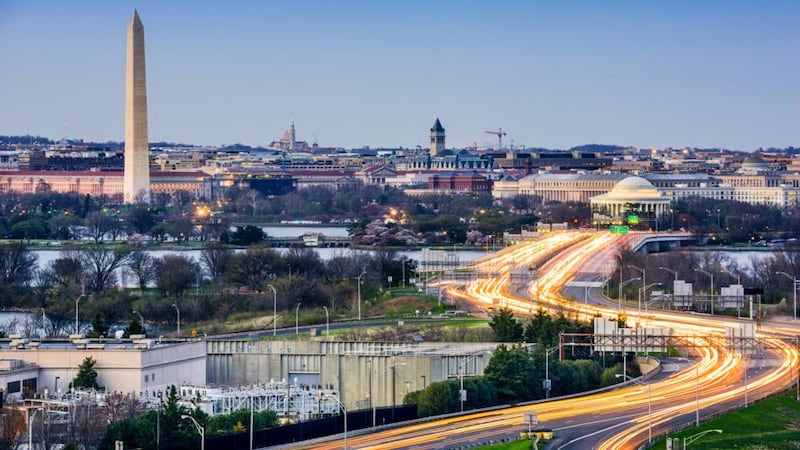Walk out of Shaw-Howard University Metro station in Washington and the Shaw neighbourhood strikes you as a perfect example of the kind of gentrification going on in the US's booming capital city.
There are trendy restaurants, coffee shops and hipster bars beneath a shiny new high-rise apartment block towering overhead.
This new development is called Progression Place, a name that reflects how the area appears to have recovered in the decades since the 1968 race riots that gutted the neighbourhood following the assassination of civil rights leader Martin Luther King jnr.

The only evidence of problems this week was a visible police presence. One officer sat on his motorcycle near the Metro stop, two more in the parked cars. A fourth was calling door-to-door to shops.
At the corner of 7th and S streets, temporary mounted police cameras have been installed to cast a watchful eye on the street below.
Shortly before 5pm on Saturday, August 15th, Matthew Shlonsky (23), a recent graduate of American University in Washington and a former Capitol Hill intern for a US senator from his native Ohio, had just stepped out of a cab near this corner and walked into a gunfight between rival gangs. The financial analyst was heading to a going-away party when he was struck by a stray bullet and collapsed.
Two men had pulled handguns out of their waistbands and were returning fire at a man with a gun who was appearing through a sun roof in a passing car. A man has been charged in relation to a feud that police suspect started over a game of dice.
The random killing of an innocent young bystander has shocked many DC residents and left some of them questioning whether the prosperity that has returned to the city in the past decade masks deep-seated social problems.
Surge of violence
There has been a surge of violence in the city recently. This week, Washington’s murder count reached 105 for the year, a 44 per cent increase over the number murdered in the same period last year.
Washington is not alone. Murder rates have been rising in cities across the US after years of sharp declines. The New York Times reported this week that there had been even bigger year-on-year increases in three other cities: 76 per cent in Milwaukee, 60 per cent in St Louis, 56 per cent in Baltimore. Homicide rates have also risen in Chicago, Dallas and New York, but at lower rates.
"That could have been anyone," says Stanley Mayes, co-owner of Divine Shine, a shoe repair shop around the corner from where Shlonsky was shot. Mayes has lived in this neighbourhood all his life. "The psychosis I am worried about is that somebody who has such a lack of respect will open fire in a public space."
Mayes has seen shootings in broad daylight before. Several years ago, he says, there was gunfire outside his shop one afternoon. He points across the street to a primary school yard where kids were playing.
"They think: 'Nobody is going to see me, no one is going to tell anyone, I am going to get away with this.' That logic is unbelievable," says Martin Moulton, a healthcare consultant and community activist who bought a house in the neighbourhood in 2001.
One Friday evening last year, gunfire erupted right outside his house and he had to dive from his bed for cover.
“The gunshots didn’t stop after, like, pow-pow. They kept going. It was still light outside and people were walking their dogs,” he says.
Socioeconomic factors
Mayes puts the resurgence in violence down to socioeconomic factors. Single mothers have been forced to work several jobs, and stay-at-home residents, who might in the past have kept wayward youths in check in the absence of their parents, have been priced out of the neighbourhood by rising property prices and the accompanying taxes.
The anger felt among young black men in the community at new buyers in the area transcends race. Moulton, an African-American, says that he felt resentment from some residents that “we were doing something bad by buying houses in the neighbourhood”.
Mayes says: “Some people remember when so-and-so had a house and got priced out of the community, so they don’t look at Martin and resent Martin; they resent what that represents to them.”
Drug dealers have replaced upstanding professional pillars of the community, who have moved elsewhere in the “black flight” from the city, as role models for young people. Easy access to illegal firearms across the city means tense situations can quickly turn lethal.
“I cannot tell you the last time I saw a fist fight,” says Mayes, who remembers many growing up in the area. “The one thing everybody in the place is afraid of now is that people will pull out a gun.”










